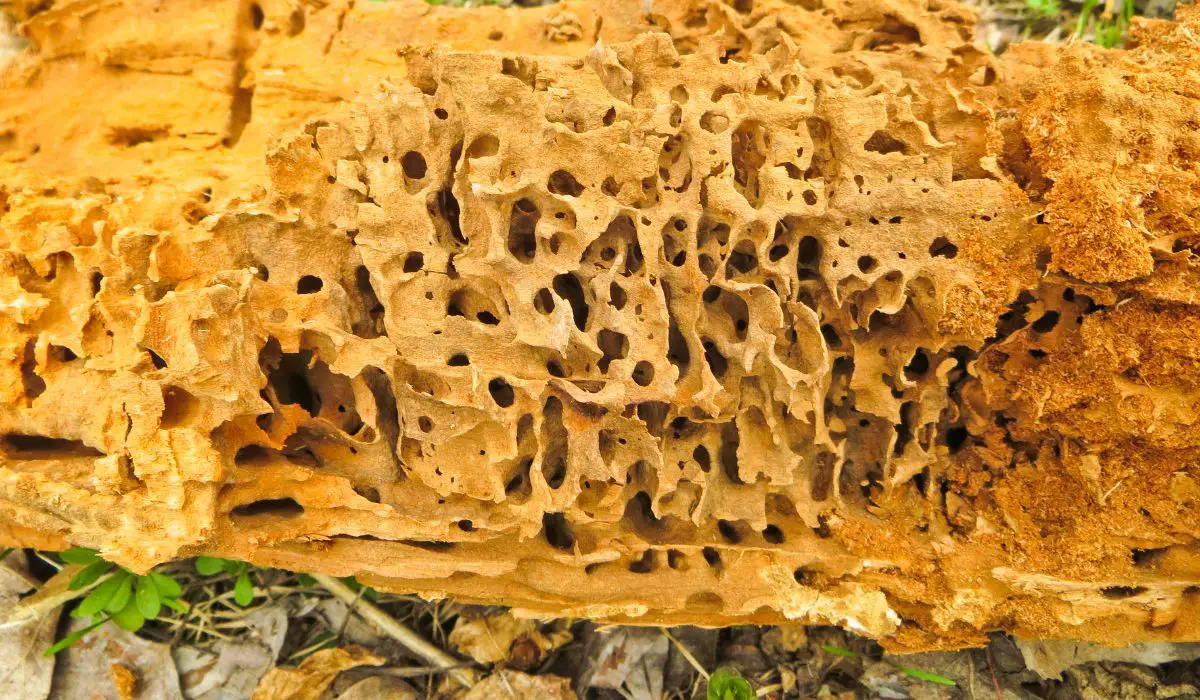Last Updated on September 12, 2022 by Griselda M.
Money trees can be an excellent addition to any space. However, without proper care and maintenance, they can quickly become a real money pit. These trees are susceptible to diseases that cause their trunk to rot, which can quickly spread throughout the whole tree and lead to an expensive replacement. It’s important to prevent this from happening to your money tree.
Even though rotten tree trunks are a common sight in many forests and woodlands, it doesn’t mean that they should be welcome in your garden. But, why is the money tree rotting trunk process happening? Some scientists believe it could be due to waterlogging, which happens when soil becomes saturated with water. The tree cannot absorb all the available water and so the trunk starts to rot. Another possible cause could be fungal infections. Regardless of the reason, money tree rotting trunks are a common sight in many forests and woodlands, don’t let it be a common sight in your own indoor or outdoor garden.
In this article, we will cover everything you need to know about the money tree rotting trunk process, what triggers it, and how to handle it. So, without further ado, let’s get you informed about the money tree’s rotting trunk.
Learn more about Money Tree Sap – Interesting Things You Need To Know
What Is Money Tree Rotting Trunk Process?
The rotting of a money tree trunk could emanate from root rot. In a tree, root rot usually starts as a small area of yellowing and wilting around the trunk and lower branches. This area grows, often resulting in the entire tree being weakened and dying. Money tree rot starts slowly and can eventually cause the tree to fall over if not immediately attended to. The most common symptom of money tree rot is a yellowish-brown or red spot that looks like a ring around the trunk.
How To Care For A Money Tree Rotting Trunk?
Once a money tree starts to rot, it becomes hard to tell whether or not it will die. This condition is often fatal and will kill the entire tree. The only way to save your money tree is to remove the affected trees and prune out the diseased limbs. The tree should be carefully pruned with a sharp knife or garden shears to avoid damaging the rest of the tree.
There are various ways to protect the tree from this disease, including providing ideal growing conditions such as fertilizing and pruning. Fertilizing the tree is recommended, but if you are unsure of what fertilizer to use, you can call a tree care specialist. You should also prune the tree, especially the diseased parts to help prevent the rot from spreading.
If the rot is caused by a fungus, it can be treated using fungicides. Ask your local garden center to recommend the best fungicide for your particular tree rot problem.
Remedies For A Money Tree Rotting Trunk
The easiest way to diagnose money tree rot is simply to look for the telltale signs: yellowing leaves and trunk, discoloration, etc. But there are other, more subtle signs of trouble too, such as wilted foliage and dry branches. There are several possible causes of money tree rot, including insect infestations, diseases, poor air circulation, improper soil pH, too much or too little water, drought, and nutrient deficiencies. These can put stress on the tree, making it susceptible to various infections that may lead to trunk rot.
The best way to keep your money tree healthy is to prune it regularly. In other words, remove any dead, diseased, or damaged branches. If you wait too long, you run the risk of having to cut down the entire tree, which can ruin the appearance of your garden.
8 Ways To Examine A Money Tree Rotting Trunk
Money trees are very fragile. And they often can rot away if not cared for. You can prevent this from happening. By learning these steps, you can save a money tree from rotting away.
- Look for holes and cracks in the bark of the tree
- Look out for any seemingly dead spots on the trunk
- Watch out for any signs of unhealthy leaves such as discoloration and spotting
- Check for fungi growth around the bark
- Are there any signs of root rot?
- Inspect the money tree bark for any spots that may be oozing
- Inspect the underside of the bark for cavities
- Check for signs of holes caused by insects on the bark
Final Thoughts On Money Tree Rotting Trunk
Although money tree trunk rot is quite common, it can be absolutely avoided and even remedied by acquiring knowledge about the process, such as that provided in this article.
The best way to understand the money tree rotting trunk process is to know what it is, and its causes and to examine your tree in the best way possible, by following the steps outlined above. There are two possible outcomes if you notice this process happening, to use fertilization and prune out the rotting parts. You will also know if you need to cut down the whole tree if the damage has gone beyond repair, hopefully, your situation does not get that dire.
Either way, you must do a detailed examination to make the right choice. We mentioned some recommendations about how to handle the money tree rotting trunk situation; I hope you will find them handy.
For other gardening-related topics, check out our other articles, and as always, thank you for reading!
FAQ
How do you fix a rotten money tree?
So let’s say your money tree is starting to lose some of its leaves. It’s getting sick. It’s losing too many of its leaves, and they’re dropping at a rapid rate. So what do you do? Well, obviously, you’re going to need to cut it back. This means pruning off the unhealthy leaves, or branches. If you’re a professional landscaper tool owner, you’ll have all the equipment you need to do it right. But if you’re just a regular Joe with a lawnmower, it's best to call a professional landscaper with the right tools to help you out with this pruning process.
How do you keep a money tree trunk from rotting?
You must not overwater the tree, that would be the first suggestion. If you notice that soil has a strong, uncharacteristic smell, there is a chance that the roots are starting to rot. So, the best way is to do regular examinations and re-potting. In this process is crucial to change the soil.
What causes trunk rot?
Trunk rot is a term used to describe the decay of wood in the tree, caused by fungi. The spores of the fungus penetrate the sapwood or heartwood, causing decay, and the dead or dying areas of the tree eventually die and fall off. Once dead, the tree is vulnerable to insects and other organisms that attack living tissue.
How do I know if my tree trunk is rotten?
There are some common ways to tell if your tree trunk is rotten. Many of them are visual and you can easily spot them. If you see any of the following signs, you can be sure the tree is infected and you should get rid of it immediately, or try to prune it and save it. Here is the list of the common signs:
1. Soggy
2. Water-soaked
3. Swollen
4. Split
5. Blackened
6. Cracked
7. Broken
8. Worn
Find more information about Money Tree Sap – Interesting Things You Need To Know
LED Full Spectrum Plant Light for Indoor Plants
Branko is the world‘s most enthusiastic gardener! He is always on the hunt for the perfect flower, bush or tree to add to his ever–growing garden. He is known for his love of all things green, and his passion for nurturing the plants he grows is unmatched. He loves to get his hands dirty and can often be found humbly tending to his garden at all hours of the day. Branko is the go–to guy when it comes to gardening advice – he is always happy to share his knowledge and wisdom with anyone who will listen. He also loves to play pranks on unsuspecting visitors, so beware if you enter his garden!




